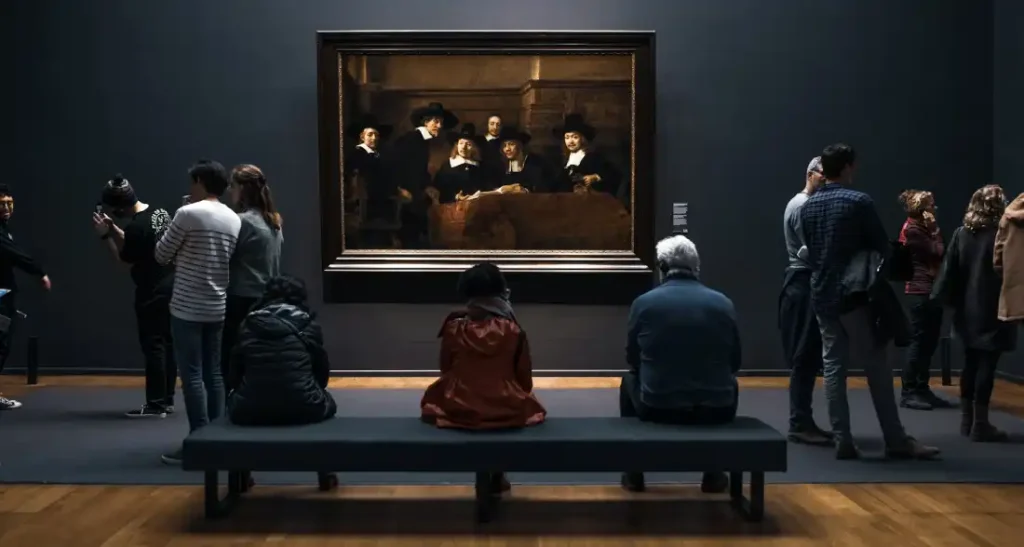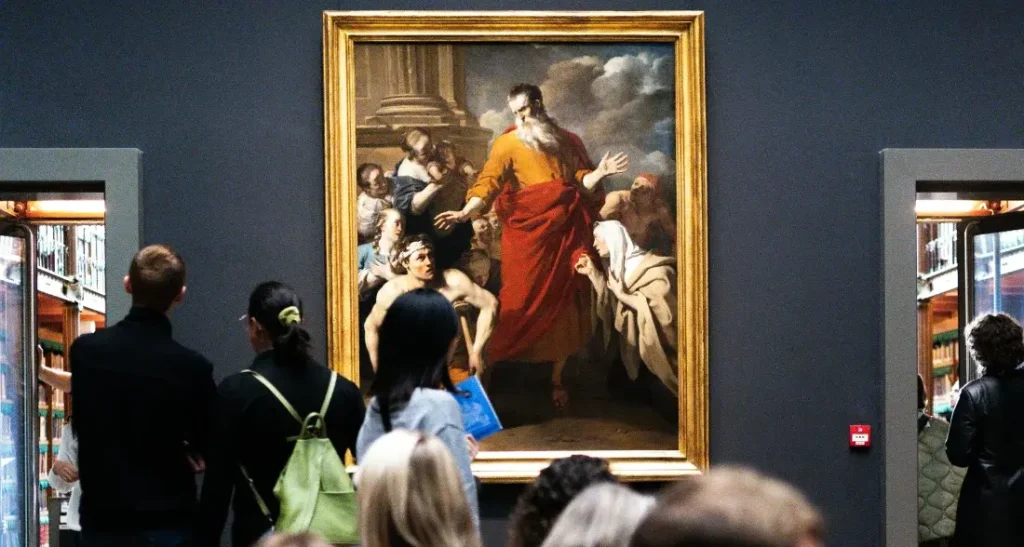The Rijksmuseum, located in Amsterdam, is one of the most significant and revered art museums in the world. Established in 1800 and moved to its current location in 1885, it stands as a testament to Dutch culture, history, and art. Housing an extensive collection that spans over 800 years, the museum offers an immersive experience into the rich tapestry of Dutch and international art. With over 8,000 objects on display, visitors can explore everything from medieval manuscripts to modern masterpieces. The museum’s architecture itself is a marvel, designed by Pierre Cuypers, blending Gothic and Renaissance styles. Whether you are an art enthusiast, a history buff, or a casual visitor, the Rijksmuseum offers something captivating for everyone.
In this article, we will explore 15 interesting facts about the Rijksmuseum that highlight its unique features, historical significance, and the treasures it holds. These facts will provide a deeper understanding of why the museum is a must-visit destination and what makes it special. From the most famous works in its collection to its largest paintings and original purpose, these details will enrich your appreciation of this iconic institution. Let’s delve into the fascinating world of the Rijksmuseum.

The Rijksmuseum is special for its vast and diverse collection, which includes masterpieces from the Dutch Golden Age, such as Rembrandt’s “The Night Watch” and Vermeer’s “The Milkmaid.” The museum’s comprehensive range covers over 800 years of Dutch and global art history, making it a treasure trove of cultural heritage. Additionally, its architecturally stunning building, designed by Pierre Cuypers, combines Gothic and Renaissance elements, creating an inspiring atmosphere for art appreciation.
The most famous work in the Rijksmuseum is Rembrandt’s “The Night Watch.” This monumental painting is renowned for its dramatic use of light and shadow, dynamic composition, and life-sized figures. It depicts a militia company led by Captain Frans Banning Cocq and his lieutenant, Willem van Ruytenburch, capturing a moment of action and excitement. “The Night Watch” is a quintessential example of Rembrandt’s mastery and a highlight of the Dutch Golden Age.
Absolutely, the Rijksmuseum is worth visiting. It offers an unparalleled glimpse into Dutch art and history, housing some of the most iconic artworks in the world. The museum’s extensive collection, interactive exhibits, and beautiful gardens provide a rich and engaging experience for visitors of all ages. Additionally, the Rijksmuseum frequently hosts special exhibitions and educational programs, further enhancing its appeal.
The original purpose of the Rijksmuseum was to serve as a national museum that would showcase Dutch art and history. It was founded in 1800 as the National Art Gallery in The Hague and later moved to Amsterdam in 1808. The museum aimed to promote a sense of national pride and cultural identity by preserving and displaying the nation’s artistic and historical treasures.
The largest painting in the Rijksmuseum is “The Night Watch” by Rembrandt. Measuring approximately 3.63 meters by 4.37 meters (11.91 feet by 14.34 feet), this colossal masterpiece dominates the Gallery of Honour. Its grand scale and intricate details make it a centerpiece of the museum’s collection and a must-see for visitors.
The Rijksmuseum boasts an impressive collection of approximately 1 million pieces of art, of which around 8,000 are on display at any given time. The collection includes paintings, sculptures, prints, drawings, photographs, and decorative arts, offering a comprehensive overview of Dutch and global art history.
The Rijksmuseum’s building, designed by Pierre Cuypers, is a work of art in itself. Completed in 1885, it combines Gothic and Renaissance architectural elements, featuring intricate brickwork, grand arches, and detailed sculptures. The building’s design reflects the rich cultural heritage it houses, creating a harmonious blend of art and architecture.
The Cuypers Library, located within the Rijksmuseum, is the largest and oldest art history library in the Netherlands. It holds a vast collection of books, manuscripts, and periodicals that span centuries of art history. The library’s stunning interior, with its high ceilings, wooden shelves, and ironwork, provides a scholarly ambiance for researchers and visitors alike.
The Rijksmuseum’s gardens offer a serene escape from the bustling city. Spanning over 14,500 square meters, they feature manicured lawns, flowerbeds, sculptures, and fountains. The gardens are designed to complement the museum’s architecture and provide a tranquil setting for visitors to relax and enjoy outdoor art installations.
The museum is renowned for its collection of Dutch Masters, particularly works from the 17th century Dutch Golden Age. This period is well-represented with masterpieces by artists such as Rembrandt, Vermeer, Hals, and Steen. These works provide invaluable insights into the artistic, cultural, and social history of the Netherlands.
The Rijksmuseum offers a variety of interactive exhibits and educational programs designed to engage visitors of all ages. These exhibits use modern technology to enhance the learning experience, allowing visitors to explore the art and history in a hands-on and immersive way. Programs for children and families make art accessible and enjoyable for younger audiences.
In addition to its permanent collection, the Rijksmuseum hosts special exhibitions that showcase art from various cultures and time periods. These temporary exhibits provide fresh perspectives and highlight connections between different artistic traditions. They also offer opportunities to see rare and significant works on loan from other institutions.
The Rijksmuseum is actively involved in art restoration and conservation projects. Its dedicated team of conservators works meticulously to preserve and restore artworks, ensuring their longevity for future generations. Visitors can sometimes observe these conservation efforts in action, gaining insight into the techniques and challenges involved in art preservation.
The Rijksmuseum is committed to being accessible to all visitors. It offers various services to accommodate different needs, including wheelchair access, audio guides, and tactile models for visually impaired visitors. The museum’s inclusive approach ensures that everyone can enjoy and appreciate the art and history it presents.
A visit to the Rijksmuseum is not just about viewing art; it is a rich cultural experience. The museum’s diverse collection, beautiful surroundings, and engaging programs provide a comprehensive and immersive journey through history and art. Whether you are a seasoned art lover or a curious newcomer, the Rijksmuseum offers something unique and memorable for everyone.
In summary, the Rijksmuseum stands out for its exceptional collection of Dutch and global art, its historical and architectural significance, and its commitment to education and accessibility. Exploring the museum’s treasures, from iconic masterpieces to lesser-known gems, offers a deep and enriching cultural experience. Whether you are captivated by the grandeur of “The Night Watch” or intrigued by the intricate details of Dutch decorative arts, the Rijksmuseum provides a window into the world’s artistic heritage that is both inspiring and enlightening.

RIJKSMUSEUM TICKETS
Rijksmuseum Tickets
The pull of more than 35,000 masterpieces at the Rijksmuseum beckons visitors to set out on an artistic adventure. At 34€, the adult…
RIJKSMUSEUM INFORMATION
Rijksmuseum visiting hours
RIJKSMUSEUM INFORMATION
Rijksmuseum location
Top things to do in Amsterdam
